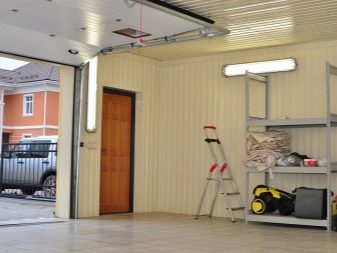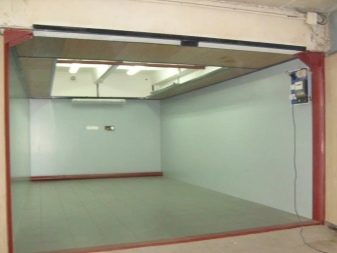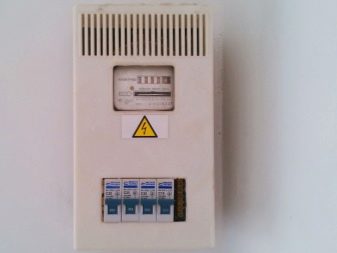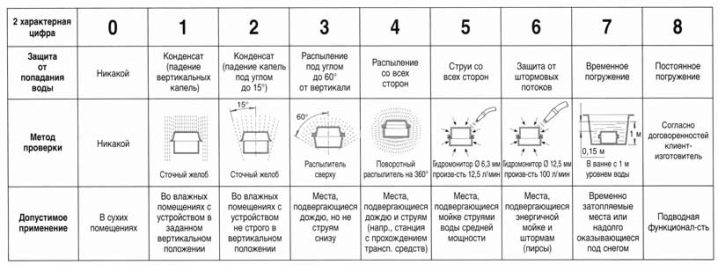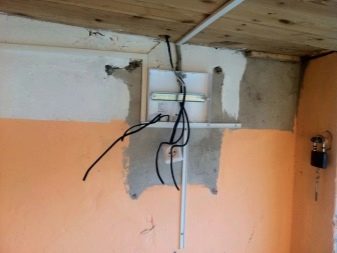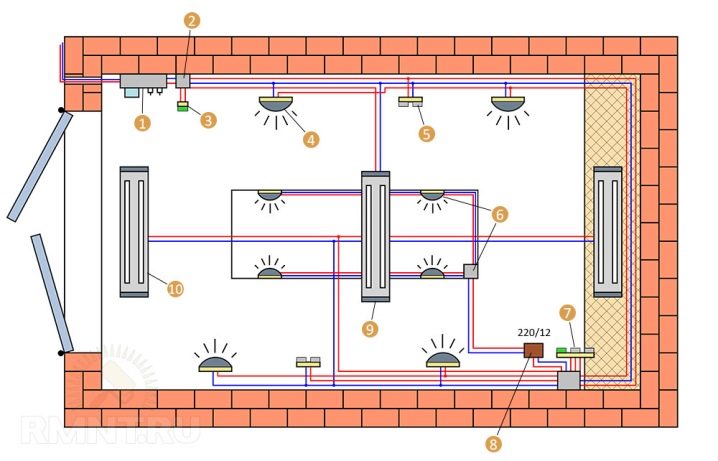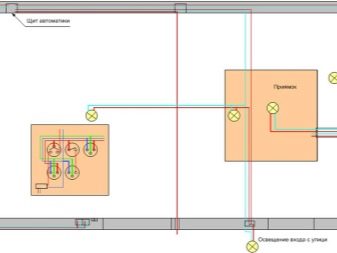Wiring in the garage: the subtleties of design and installation
For many owners, the garage belongs to the category of frequently visited places, and it is used not only for parking, but also as a workshop, warehouse or utility room.
Electricity in the garage is always necessary, because often there is a need to recharge the battery or pumping a flat tire, and those owners who store crops in the pit, electricity is also extremely important.
Special features
Despite the area, the garage, as a rule, has a similar electrification scheme with an apartment or a private house, and doing your own wiring in the garage is quite a possible task. Nevertheless, each owner does everything in his own way and does not always follow the rules. When powering a lot depends on the size of the garage, interior decoration and arrangement, but the main requirement for electrical wiring is safety and functionality.
In any case, it is important to properly position the bulbs, sockets and switches.
Circuit is prepared taking into account all the necessary parameters.
In this case, it all depends on what appliances and energy consumers should be in the garage:
- Central lighting. A powerful lamp located under the ceiling is perfect for this. Experts strongly recommend choosing dust-proof lamps for the garage and distribute them around the garage perimeter so that they fully illuminate the entire room, and not just the car's roof.
- Viewing pit or harvest storage pit must have lighting. Going down with a flashlight in your hands is not a very convenient exercise. For full use of the pit inside it is necessary to arrange a stationary light, as well as two sockets with protective covers. But if the sockets below are not planned to be used, then it is worth considering an option in favor of an extension cord. But do not forget to place one outlet above, near the pit, so that you can stretch the extension cord down without any problems.
- Sockets. Their number depends on individual wishes.It is likely that over time, you will need an outlet for an electric heater, as well as a good place for a kettle and a tile. Outlets must be placed in the corners of the garage.
- Electrical panel. It is significantly different from the home version. The shield in the garage includes a counter, input and separation machine. The number of automatic machines can be increased if necessary, but, as a rule, for a single line of electrical wiring such a quantity is enough.
Safety regulations
Before turning to the connection of electricity in the garage, it is necessary to study the basic safety requirements. Due to the high humidity, wide temperature range and conductive walls, the garage is a high-risk room.
Therefore, all electrical products must comply with safety class IP44, that is, be protected from dust and moisture.
It is necessary to take into account all the basic rules of SNiP:
- Wiring is laid strictly horizontal or vertical lines, and all connections must be made at right angles. No zigzags and diagonal lines are allowed.
- If the garage is part of the cooperative ownership, then you need to obtain the appropriate permission to connect electricity, because, as a rule, cooperatives are connected to their own substation. All necessary information on the list of documents and deadlines for approval must be clarified with the administration.
- Wiring is laid on the wall at a distance of 10 cm to the ceiling. You also need to maintain an indent of 15-20 cm from passing communications and corners.
- You need to place sockets at a height of 50-60 cm from the floor - this is the optimal distance for comfortable work in the garage. For switches, the optimal distance is 150 cm from the floor.
- Sockets and switches should be made of materials that do not support combustion.
- When drawing up a plan and choosing a cable, it is necessary to take into account the maximum load of all electrical appliances. The total power is needed in order to pick up cables and automatons over the cross section and nominal current. Properly selected cable will withstand the load of powerful electrical devices.
Materials and equipment
Electrical wiring is of two types: closed and open.The difference is whether the wiring is laid on the wall or hidden inside.
Closed wiring is protected from mechanical damage and water, but requires more laborious work. Another advantage of the closed type is that if the wiring is ignited, the fire will not spread inside the garage, but will quickly go out due to the lack of oxygen. Also, it should be noted more attractive and complete appearance.
Open wiring is laid quickly and allows, if necessary, in a short time to replace the wire or cable. In addition, there is no need to prepare the walls and make shtrob.
As a rule, owners of small garages choose open electrical wiring, because it is easier to maintain, although it always remains in plain sight. If it is necessary to conduct electricity to the garage at a country site, then the owner should consider the option with a capital wiring of a closed type. But under any circumstances, cables and wires for electrical equipment must be protected by electrical products: corrugated pipes, cable channels or metal hose.
If the wiring will take place on a wall trimmed with fireproof materials, can use cable channel. It is a plastic tray with snap-on lids. In this case, at any time without any problems you can replace the cable or wire.
For open wiring on flammable coatings it is better to use the metal hose, as it does not require additional accessories and can even fit at a right angle.
With closed wiring do not close the cable and wire inside the walls. It is more reasonable to hide corrugated pipes in ceilings, in which you can pull cables and wires. In this case, even after a few years, it will not be necessary to open the walls and floors and to make a full repair to replace the wiring - all you need is to get the old wires and stretch the new ones.
For fastening pipes to vertical and horizontal surfaces, special accessories are used - fasteners. Also, all connections must be sealed - for this modern manufacturers offer special couplings.
All connections and branch lines must be closed in the junction box.Do not insert the box directly into the wall - you must leave the device available.
For the wiring itself, experts recommend choosing a three-core wire with a phase, zero, and ground.
The ground wire is necessary to protect people from electric shock, as well as to maintain the operability of devices. For this perfect copper cable with insulation made of non-combustible materials.
When wiring in corrugated pipe, cable duct or metal hose You can use cable brand VVGng 3x1.5. For wiring open type or laying on flammable surfaces excellent cable brand VVGng LS 3x1.5. The cable with aluminum conductors is several times cheaper, but has a shorter service life. In addition, at the bends the wire may break, and when re-repairing it is likely that a complete replacement of the cable will be required.
Step-by-step installation technology
For the work you will need to prepare all the necessary materials and tools:
- level and paint with a brush to mark future electrical wiring;
- hammer and chisel;
- indicator screwdriver;
- side cutters;
- assembly knife;
- pliers with plastic handles;
- drill with replaceable drills;
- fasteners;
- electrical tape;
- rubber gloves.
All tools must have insulated handles.
It is possible to stretch electricity independently to the garage only for a single-phase network of 220 V. When carrying out a three-phase network 380 V it is necessary to obtain permission at your local power company. In this case, the situation is also complicated by the drafting and approval of the project, but all work related to the wiring will be handled by the authorized organization. In addition, the voltage of 380 V is necessary in large workshops and capital garages for several cars and dimensional equipment.
For a network of 220 V, you will need a 50 A electrical switchboard - then there will be a load current margin. It is better to place the guard next to the entrance door.
Training
First you need to make a diagram of electrification inside the garage. It should indicate the features of the structure and the internal arrangement. A drawing should be drawn up and indicate where the switches, lighting devices and sockets should be located, and what they will be used for.Also in the drawing must be indicated all the lines of electrical communications. In this case, you must select a scheme that corresponds to the latest version of the rules of electrical devices.
It should indicate:
- the place of the input cable line, suitable to the garage;
- introductory switchboard;
- sockets;
- switches;
- lighting devices;
- cables and wires.
It is also necessary to fully equip the distribution box. It should include the following elements:
- circuit breakers - they are necessary for protection against short circuits and overloads;
- electricity metering device - is an integral part of the electrical network;
- residual current device - increases the electrical safety of the person;
- relay for voltage control - is responsible for disconnecting those sections of the network where the voltage has reached the maximum permissible point;
- surge arresters - necessary to protect the network from switching and lightning surges.
Indoors
The quality and safety of electrical wiring also depends on the cable. The cross section of the wire determines not the thickness of the core, but its maximum permissible load.
For each device, it is necessary to select a specific section:
- Sockets. The minimum allowed wire size should not be less than 2.5 square meters. mm, and the sockets themselves must be designed for a current limit of 16 A. This is quite enough for connecting an instrument with a capacity of up to 3 kW.
- If you plan to connect powerful equipment in the garage, then you should install a special outlet with a separate line. In any case, experts recommend installing one such outlet.
- Lighting. It is considered less loaded line, so the wire must have a cross section of at least 1.5 square meters. mm
Detailed scheme of work should show how to properly conduct the wiring with your own hands:
- Any work with electricity is carried out only in the absence of voltage.
- Dilute the wiring is easier on the already prepared markup. To do this, you need to draw a diagram on the wall where the wiring will go. This approach will facilitate the work in the subsequent stages. You can also markup switches, sockets, junction boxes and lighting devices.
- Then you need to stretch the input cable to the garage. To conduct the wiring, one line is enough, from which several groups will be fed. After that, you can proceed to the installation of the shield and cable pulling throughout the room according to the diagram.
- For cable laying it is necessary to use electrical products. To stretch the cable inside the pipe or the metal hose, you should use a special probe. Many manufacturers have already supplied electrical products with such broaches. The principle of operation is quite simple: inside the pipe there is a wire that protrudes from two sides. On the one hand, the cable is attached and securely wound with wire. After that, on the other hand, the cable is pulled inside the pipe using wire.
- All wire connections must be made in a junction box.
- After that you need to install lamps and sockets.
- Then you must connect the wiring to the lamps, sockets, switches and electrical panel.
- At the end of the process it is necessary to check the performance of the system. To do this, turn on the machine and make sure that it works correctly.
Street work
On the street you can conduct electricity by air or underground. The air line can be conducted from the pillar or from the house.
If the distance from the object to the garage exceeds 25 m, then you need to additionally take care of installing additional pillars.In this case, you need a suitable power multicore cable and steel carrier wiring for more secure fastening.
If the wiring is conducted from a residential building, it should be protected by a home automatic, and when there is an additional separate line from the post, you need to install a meter in the garage. In this case, the wire at the place of entry into the garage should have additional insulation.
Basic height requirements for connecting electricity by air:
- near buildings - not less than 2.75 m;
- above the pedestrian part - not less than 3.75 m;
- above the roadway - at least 6 m.
In case the height of the garage is less than 2.75 m, then for the air connection it is necessary to additionally install a special steel pipe on the roof of the building, which will serve to connect the cable.
To lay a line underground, you must use special corrugated PVC or HDPE pipes - this depends on the cover. If the cable is filled with earth, then PVC pipes will be enough, and when it is necessary to fill the communications with concrete in the future, then only a heavy HDPE pipe will do. But in any case, a trench of 80 cm depth is initially prepared, at the bottom of which sand of about 10 cm is poured.
Useful recommendations
Laying the wiring requires certain knowledge and experience. But guided by several recommendations and rules, even a beginner will cope with this task.
- When connecting lighting fixtures inside the garage, consider lighting well outside. To do this, you need to install two separate switches or one double-key.
- If the socket is connected by a loop, then this line should include no more than three sockets.
- A safety device protects not a technician, but a person. In the event of a short circuit, the device will open the circuit in a split second and protect against current leakage.
- To protect the circuit from overload or short circuit, use a circuit breaker.
- Twisting of wires, especially from dissimilar metals, is not allowed. Instead of outdated twisting with electrical tape, you must use a spike and special tips that can be purchased at the store electricians.
- An additional grounding device installed at the input to the switchboard will increase the safety of working with electrical appliances. For this you can use metal rods with a diameter of 15-16 mm.They must be connected with steel tape and dug into the ground.
- If the owner uses the cellar, then at least one lighting fixture must be held down. It is good to place additional lighting near the stairs, so that the descent and ascent is not accompanied by any problems.
- To enter the electrical wiring inside the garage by air, a hole in the wall must be made at an inclination to the outside - this will prevent the ingress of water from the street inside.
- When working at height, wooden stepladders or special goats and scaffolds should be used. Do not use metal barrels, tables, chairs and other furniture for lifting.
How to make the lighting in the garage yourself, see below.

